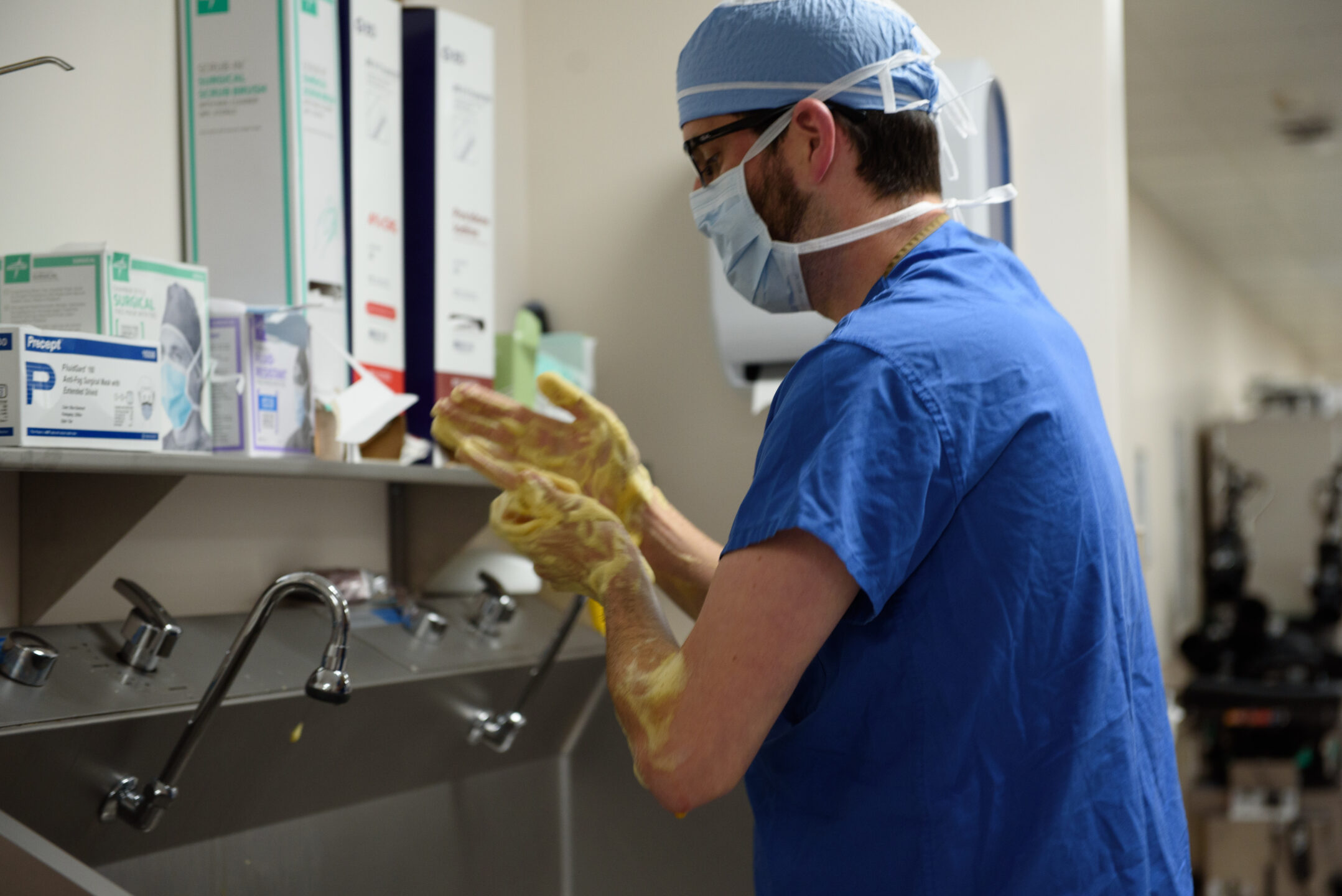Access your own patient portal, provided by NCSH.

Surgery
Sinuplasty Surgery: Everything You Need to Know
Sinusitis, inflammation in the sinuses, is a painful and uncomfortable condition causing congestion, headaches, and runny nose. If you have these symptoms for more than a few months, you could have chronic sinusitis, also known as chronic rhinosinusitis, or CRS.
Sinus surgery by an ENT (ear, nose, and throat) specialist is a solution to CRS when medications don’t help. Developments in sinus infection surgery have led to minimally invasive procedures that provide relief with brief recovery times.
What is Sinuplasty Surgery?
Sinuplasty is a surgery used to open sinus passages and restore normal drainage. An ENT or nasal doctor can perform endoscopic sinus surgery to do this. It involves inserting an endoscope, a narrow tube with a light and camera, into the nasal passage and sinuses. The surgeon uses the endoscope to view blockages and then utilizes small surgical tools to remove them.
A more recent development in sinuplasty is less invasive and the first choice for most patients struggling with sinus blockage. Balloon sinuplasty, or balloonplasty, uses an inflated balloon to open up the sinus passage rather than using cutting instruments to physically remove tissue. The balloon procedure is less invasive and risky and has a faster recovery time.
What Does a Sinuplasty Procedure Treat?
Sinuplasty is generally used to treat CRS, chronic sinusitis. CRS is the long-term inflammation in the sinuses that doesn’t respond to medical treatment, such as antibiotics and nasal steroids.
CRS is often caused by an infection in the upper respiratory tract or allergies that block the sinuses. Some medical conditions can cause it as well as physical barriers like a deviated septum or nasal polyps. Symptoms of CRS include:
- Nasal inflammation and congestion
- Runny nose and drainage down the back of the throat
- Pain around the eyes, cheeks, nose, and forehead
- Limited smell and taste
- Headaches
- Earaches
- Pain in the upper jaw
- Sore throat
- Fatigue
Who Can Benefit from Balloon Sinuplasty?
Patients who have struggled with sinusitis for months and who have not gotten relief from medical treatment can benefit from a balloon procedure.
Not everyone is a good candidate for balloon sinuplasty. For instance, balloon sinuplasty for a deviated septum is not a permanent fix and isn’t often used for this condition, but it might allow you to breathe a little easier. When managing symptoms no longer works as a treatment strategy, you might need surgery.
Some patients might need endoscopic surgery to actually remove damaged or blocking tissue. Balloon sinuplasty is generally not recommended for anyone with nasal polyps, for instance. The balloon cannot remove these blockages.
What Happens During a Sinuplasty?
 If your doctor believes you are a good candidate for sinuplasty, they will image your nasal passages to determine which procedure is best. You will likely undergo a CT scan. Your surgeon will explain what you need to do to prepare for surgery, such as stopping certain medications.
If your doctor believes you are a good candidate for sinuplasty, they will image your nasal passages to determine which procedure is best. You will likely undergo a CT scan. Your surgeon will explain what you need to do to prepare for surgery, such as stopping certain medications.
You might go under general anesthesia for the procedure, but this is something you can discuss with your surgeon. Balloon sinuplasty can usually be performed in a medical office with a numbing solution injected into the nose.
Balloon Sinuplasty
During a balloon procedure, the doctor will insert an endoscope with a light into the nostril to be able to see the passageway to the sinus. They will then use a catheter to insert a balloon. They inflate the balloon to expand the sinus passage and use a saline solution to flush out any mucus.
While expanded, the balloon gently restructures the passage to open it up. The doctor removes the balloon, and these structural changes should remain so that you can breathe more easily.
Endoscopic Sinus Surgery
In this more traditional procedure, the doctor uses a scope to direct the use of surgical instruments. They use these instruments to cut or scrape away any polyps or other types of tissue blocking the sinus.
Recovering from Sinuplasty
If you need to have endoscopic surgery, recovery can take a couple of weeks. Your surgeon will give you detailed instructions. Generally, you will not be able to blow your nose for a week and you will need to avoid strenuous activities for about 10 days.
Recovery from balloon sinuplasty is much faster and easier, which is why it is the preferred procedure for patients who qualify. Most patients can return to normal activities just one or two days later, although it’s best to avoid strenuous activities for about a week. You can blow your nose after 24 hours.
After a sinuplasty, you might experience some nasal bleeding, swelling, congestion, and fatigue. This is all normal, and you should be symptom-free within five to seven days.
The risk of complications is low with balloon sinuplasty. Contact your doctor if your nose bleeds excessively or if you cannot control the bleeding. Infection is an unlikely risk but possible. See your doctor if you have any troubling symptoms.
Sinuplasty is a simple, common procedure. You don’t have to live with the uncomfortable congestion and pain of CRS. If you’re ready for a better solution, make an appointment with one of our ENT providers.
Stay Current
Educational Articles & More
View News & Press